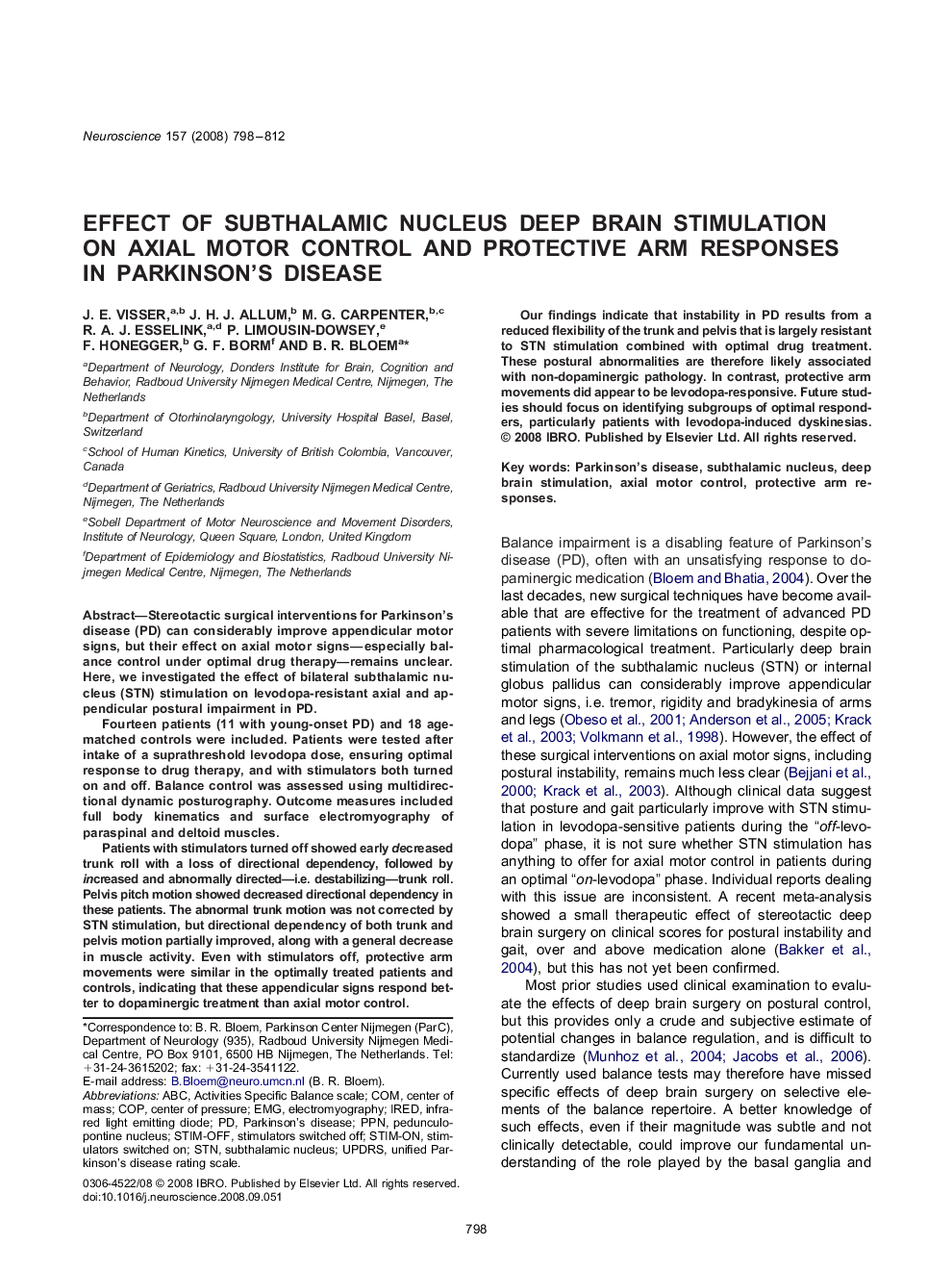| کد مقاله | کد نشریه | سال انتشار | مقاله انگلیسی | نسخه تمام متن |
|---|---|---|---|---|
| 4340036 | 1295780 | 2008 | 15 صفحه PDF | دانلود رایگان |

Stereotactic surgical interventions for Parkinson's disease (PD) can considerably improve appendicular motor signs, but their effect on axial motor signs—especially balance control under optimal drug therapy—remains unclear. Here, we investigated the effect of bilateral subthalamic nucleus (STN) stimulation on levodopa-resistant axial and appendicular postural impairment in PD.Fourteen patients (11 with young-onset PD) and 18 age-matched controls were included. Patients were tested after intake of a suprathreshold levodopa dose, ensuring optimal response to drug therapy, and with stimulators both turned on and off. Balance control was assessed using multidirectional dynamic posturography. Outcome measures included full body kinematics and surface electromyography of paraspinal and deltoid muscles.Patients with stimulators turned off showed early decreased trunk roll with a loss of directional dependency, followed by increased and abnormally directed—i.e. destabilizing—trunk roll. Pelvis pitch motion showed decreased directional dependency in these patients. The abnormal trunk motion was not corrected by STN stimulation, but directional dependency of both trunk and pelvis motion partially improved, along with a general decrease in muscle activity. Even with stimulators off, protective arm movements were similar in the optimally treated patients and controls, indicating that these appendicular signs respond better to dopaminergic treatment than axial motor control.Our findings indicate that instability in PD results from a reduced flexibility of the trunk and pelvis that is largely resistant to STN stimulation combined with optimal drug treatment. These postural abnormalities are therefore likely associated with non-dopaminergic pathology. In contrast, protective arm movements did appear to be levodopa-responsive. Future studies should focus on identifying subgroups of optimal responders, particularly patients with levodopa-induced dyskinesias.
Journal: Neuroscience - Volume 157, Issue 4, 10 December 2008, Pages 798–812